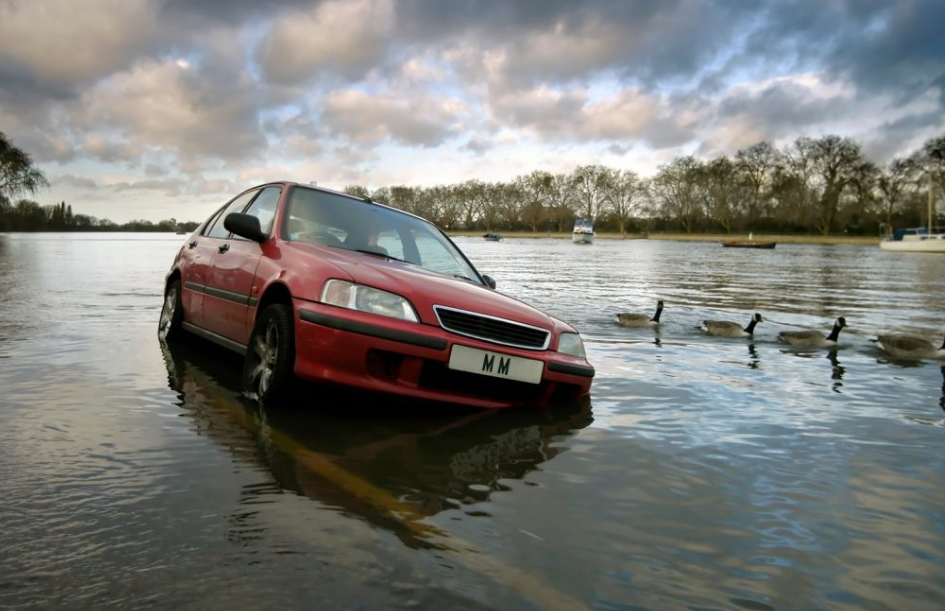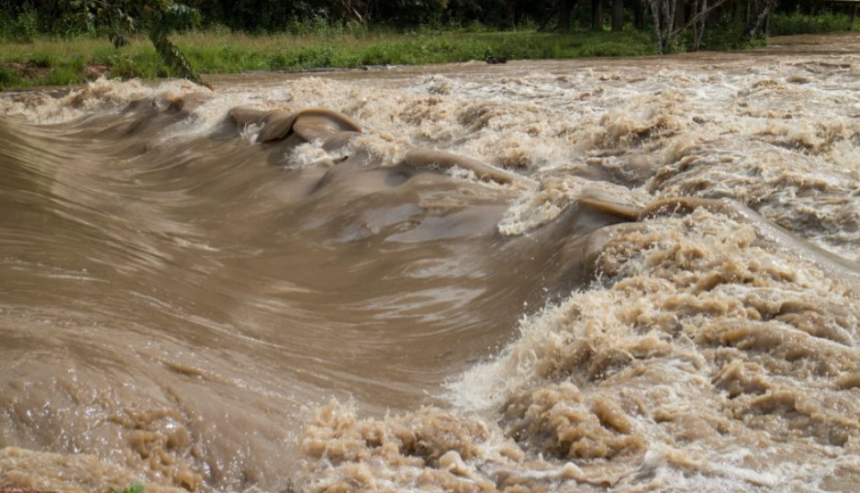10 Facts About Flash Floods
Flash floods are one of nature’s most formidable displays of power, capable of striking with little warning and wreaking havoc within moments. These sudden inundations of water can occur almost anywhere, from bustling urban centers to remote rural areas, leaving behind a trail of destruction and devastation. Understanding the dynamics and impacts of flash floods is crucial for preparedness and mitigation efforts.
In this article, we’ll delve into 10 essential facts about flash floods, shedding light on their causes, characteristics, and consequences. Whether you’re a curious bystander or someone directly impacted by these natural phenomena, join us as we navigate through the fascinating world of flash floods.
What creates a flash flood?
The National Weather Service emphasizes that flash floods result from the convergence of multiple weather elements rather than a singular event. Primarily, heavy rainfall over a prolonged duration across dry land areas serves as the primary catalyst for flash flooding. Additionally, the interplay of soil conditions, ground cover, and topography significantly influences flood occurrence. When rainfall surpasses the ground’s absorption capacity, flash floods ensue.
These deluges can manifest within mere minutes of excessive rainfall or in the event of dam or levee breaches, precipitating a sudden surge of water. Often, slow-moving thunderstorms persistently traversing the same region or the torrential downpours accompanying hurricanes and tropical storms are responsible for the majority of flash floods. Understanding the multifaceted dynamics behind flash flood formation underscores the necessity for robust mitigation and preparedness measures.
Areas most susceptible to flash flooding
Flash flooding can occur in various regions and environments, but certain areas are more susceptible due to specific geographic, climatic, and human factors. Here are some of the areas most prone to flash flooding:
- Urban Areas: Cities and towns with extensive paved surfaces, inadequate drainage systems, and rapid urbanization are highly vulnerable to flash flooding. Impermeable surfaces such as roads, parking lots, and buildings prevent water from infiltrating the soil, increasing runoff and flood risk during heavy rainfall events.
- Low-Lying Areas: Regions situated in low-lying or basin-like topographies, such as valleys and floodplains, are prone to flash flooding. These areas often experience rapid runoff and accumulation of water, particularly during intense rainfall or when rivers overflow their banks.
- Mountainous Terrain: Steep slopes and narrow valleys characteristic of mountainous regions can exacerbate flash flooding. Heavy rainfall can quickly generate torrents of water that cascade downhill, leading to rapid runoff and flash flood events.
- Arid and Semi-Arid Regions: Despite their infrequent rainfall, arid and semi-arid regions are susceptible to flash flooding due to the lack of vegetation and limited soil absorption capacity. When rainfall does occur, the dry and compacted soil cannot effectively absorb water, resulting in rapid runoff and flash floods.
- Coastal Areas: Coastal regions are vulnerable to flash flooding, particularly during storm surges associated with tropical cyclones, hurricanes, and severe weather systems. High tides combined with intense rainfall can inundate coastal communities, leading to flash flooding and coastal erosion.
- Areas Prone to Wildfires: Regions that have recently experienced wildfires are at increased risk of flash flooding and debris flows. The loss of vegetation and destabilization of soil can lead to heightened runoff and sediment transport during rainstorms, increasing the likelihood of flash floods.
- Riverine and Watershed Areas: Riverine and watershed areas are susceptible to flash flooding, especially when heavy rainfall coincides with snowmelt or when upstream dams or levees fail. Rapid rises in river levels can lead to sudden inundation of adjacent low-lying areas and communities.
- Developed Floodplains: Floodplains that have been developed for agriculture, industry, or residential purposes are at heightened risk of flash flooding. Human modifications to natural drainage patterns, such as channelization and levee construction, can alter the flow of water and increase flood vulnerability.
How powerful are flash floods?
Flash floods are extremely powerful, characterized by their rapid onset and intense force. They unleash a high volume of water with great velocity, capable of eroding soil, uprooting trees, and demolishing infrastructure. The floods often carry debris, increasing their destructive potential, and are powerful agents of erosion, reshaping landscapes and carving out new channels in their path.

Will you know when a flash flood is coming?
While it’s challenging to predict flash floods with precision, several warning signs can indicate their imminent occurrence, such as heavy rainfall, rising water levels in rivers or streams, and weather alerts issued by authorities. Monitoring weather conditions, staying informed through alerts, and being vigilant can help individuals prepare for and respond to flash flood threats.
How to avoid deadly flooding
Before a Flood:
Avoid building in a floodplain: If you live in an area prone to flooding, consider buying flood insurance to cover potential losses.
Construct barriers: Levees, beams, and floodwalls can help prevent floodwater from entering your home. In emergencies, sandbags can serve as temporary levees.
When a Flood Is Imminent:
Have an emergency plan: Practice survival skills such as first aid and learn how to disinfect water.
Avoid low spots: Stay away from ditches, basements, or underpasses during a flood.
During a Flood:
Gather emergency supplies: Fill bathtubs, sinks, or containers with clean water.
Listen to local updates: Tune in to your local radio or television station for flood-related information.
Secure outdoor possessions: Bring in lawn furniture, grills, and trash cans or secure them.
Evacuate if necessary: Turn off utilities and leave flood-prone areas.
Immunization records: Keep them handy in a waterproof container.
After a Flood Has Occurred:
Do not drink floodwater: Use clean, safe water for drinking, cooking, and hygiene.
Return home only when authorities say it’s safe: Listen to water advisories regarding drinking water safety.
Avoid driving through flooded areas: Even six inches of water can cause you to lose control of your vehicle.
Prevent carbon monoxide (CO) poisoning: Use generators and pressure washers outside, at least 20 feet from doors, windows, and vents.
Practice safe cleaning: Throw away food and water that came in contact with floodwater. Clean contaminated items with diluted household bleach2.
Remember, preparation and caution are key to staying safe during floods. If you’re in a flood-prone area, take proactive steps to protect yourself, your family, and your home.
10 Facts About Flash Floods
- Flash floods are a common threat across the United States, affecting all regions, but low-lying areas near riverbeds and coastlines are especially vulnerable due to their proximity to bodies of water and susceptibility to heavy rain or rapid snowmelt. These areas are prone to sudden and intense flooding due to their natural topography and weather patterns.
- Urban areas face a heightened risk of flash floods due to impermeable surfaces like asphalt and limited natural drainage systems. The high concentration of roads, sidewalks, and buildings prevents water from infiltrating the ground, leading to increased runoff and flood susceptibility.
- Flash floods can generate water levels of up to 20 feet, causing severe damage to structures and infrastructure in their path. The rapid accumulation and force of floodwater can sweep away vehicles, uproot trees, and demolish buildings, posing significant dangers to communities.
- Even small amounts of floodwater, combined with the swift velocity of flash floods, can be incredibly powerful, capable of moving heavy objects like rocks, trees, and buildings. Just 2 feet of water moving at 9 feet per second can sweep away vehicles and cause extensive destruction.
- Shallow floodwater as little as 6 inches deep and moving swiftly can pose a significant risk to individuals, as it can sweep them off their feet and carry them away. It’s crucial to avoid walking or driving through flooded areas, as even seemingly shallow water can be dangerous.
- Flash floods have resulted in an average of 75 fatalities per year in the United States between 2004 and 2013, highlighting the seriousness of this natural hazard. Preparedness, awareness, and proactive measures are essential for reducing the risks associated with flash floods and saving lives.
- Tragically, many flash flood victims perish while attempting to outrun floodwaters instead of seeking higher ground. Seeking elevated areas or upper floors during a flash flood warning is critical for survival.
- Around two-thirds of flash flood-related deaths occur in vehicles when drivers attempt to pass through floodwaters. Driving through flooded areas is highly risky due to hidden hazards beneath the surface, including the depth of water, force of the current, and presence of debris.
- Flash floods can cause extensive structural damage, with just 12 inches of floodwater on a 2,000-square-foot building resulting in damages exceeding $50,000. Recovering from such damage can be costly and time-consuming, emphasizing the importance of preventive measures and flood-resistant design strategies.
- The National Weather Service issues flash flood warnings when flash floods are imminent or occurring, providing crucial alerts to residents and emergency management agencies to take immediate action and implement emergency plans. These warnings are essential for mitigating the risks posed by flash floods and protecting lives and property.
- Flash floods pose an extreme danger due to their sudden onset, often occurring with little to no warning. Regardless of whether one resides in urban or rural areas, the lack of advance notice amplifies the peril they present. Their unpredictable nature extends to affecting regions not typically associated with flooding, such as dry creek beds or areas distant from water bodies. This unpredictability escalates the risk, as individuals may not perceive the imminent danger until it’s too late. Moreover, their swift emergence impedes timely evacuation or preparation efforts, rendering them exceptionally hazardous.
- Meteorological phenomena like thunderstorms, hurricanes, or sudden snowmelt frequently trigger flash floods. During heavy rainfall, the ground becomes saturated, leading to rapid accumulation of excess water that overwhelms natural drainage systems. The intensity and volume of precipitation exceed the soil’s capacity to absorb water, resulting in the rapid swelling of waterways. This surge inundates surrounding areas, causing flash floods that impact not only local communities but also larger downstream regions.
- Flash floods can also escalate the risk of landslides. The correlation between flash floods and landslides highlights the interdependence of natural disasters. The deluge of water saturates soil and rock layers, diminishing their stability. This instability, coupled with the force of flowing water, can trigger landslides or mudslides, exacerbating destruction and posing additional threats to communities by obstructing roads, burying structures, and hindering rescue and recovery operations.
- Flash floods demonstrate a recurring nature, particularly in regions vulnerable to heavy rainfall or lacking adequate drainage infrastructure. Their sudden and localized occurrence can inundate the same area multiple times within a short period. This recurrence exacerbates the risk of cumulative damage to infrastructure and landscapes, intensifying the challenges faced by affected communities in recovery and reconstruction efforts.
- Climate change is increasingly associated with exacerbating extreme weather patterns, potentially intensifying the frequency, magnitude, and occurrence of flash floods. Changes in precipitation patterns due to global warming lead to more intense rainfall events in certain regions, heightening the risk of flash floods. This alteration in weather dynamics amplifies the vulnerability of communities unaccustomed to such heightened threats. The resulting implications include heightened risks of property damage, economic losses, and threats to human lives, underscoring the urgent need for proactive mitigation and adaptation strategies at local, national, and global levels.



